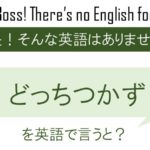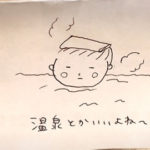
During the seven years that I’ve lived in Japan, I have visited 29 out of Japan’s 47 prefectures, some of them on multiple occasions. From these trips, I would conclude that this archipelago consists of a highly diverse collection of places. Of course, there are some similarities between them, especially major cities, but many more points of difference as well.
Let’s start with the Kansai region, where I lived for three years. Nara and Kyoto are the traditional parts of this region, with the former being a smaller-scale version of the latter, plus having more of a rural feel. Osaka is the rowdy member of the family, with its bustling atmosphere and the more down-to-earth manner of its people. Kobe falls somewhere in between the traditional and the modern, but lies closer to the latter, having been rebuilt after a major earthquake. Mie, Wakayama and Shiga, on the other hand, are the most rural members, ranging from the austere atmosphere of historical places like Ise Jingu and Koya san, to the calm waters of Lake Biwa.
Next, let’s move on to the Kanto region, where I have lived for the past six years. Tokyo is the behemoth of Japan – a one-of-a-kind blend of futuristic cityscapes and traditional-style shopping arcades. In contrast, the port city of Yokohama has retained a more relaxed vibe. As one heads east of Yokohama in Kanagawa prefecture, the landscape becomes increasingly rural, until one reaches the coastal area of Shizuoka. Similarly, to the north of Tokyo are the considerably more rural areas of Saitama, Ibaraki and Tochigi.
Turning now to islands beyond Honshu, the prefectures of Fukuoka, Nagasaki and Kagoshima have their own differences, but what they have in common is a warmer climate that resembles South Asian countries and matching tropical island landscapes. Tokushima and Kagawa on the island of Shikoku, on the other hand, are very rural prefectures (especially the former), with landscapes that reflect the common image of the Japanese countryside – namely, mountain ranges and rice fields as far as the eye can see. Finally, Hokkaido is entirely different once again, with its wide-open spaces and a greater sense of untouched wilderness.
Having covered these differences, let’s touch on some commonalities. One such point is the presence of familiar stores, such as convenience stores, even in very rural areas. This tends to be a reassuring sight when one finds oneself in the middle of the countryside, without any other landmarks. On a related note, ramen shops are ubiquitous across the length and breadth of the country, though each of them is worth visiting in their own right, because each prefecture has its own regional specialty.
In summary, the main point that I want to emphasize is that Japan is not a homogenous country in terms of both its landscape and its culture. This is an impression that one might get from visiting only famous sightseeing spots, but if one goes off the beaten track, one will encounter a diverse range of people and places.
Ming
Vocabulary
archipelago (noun) – a large group of small islands
rowdy (adjective) – noisy and causing trouble
austere (adjective) – plain in style and without decoration
behemoth (noun) – something or someone that is very large
ubiquitous (adjective) – present everywhere
homogenous (adjective) – consisting of things that are very similar
英語学習をフルサポート!
マンツーマン&コーチングの英会話教室
























